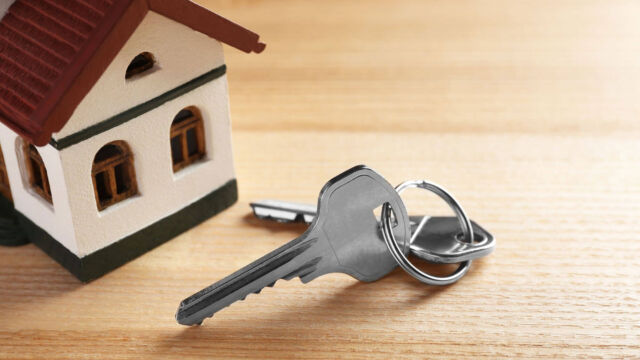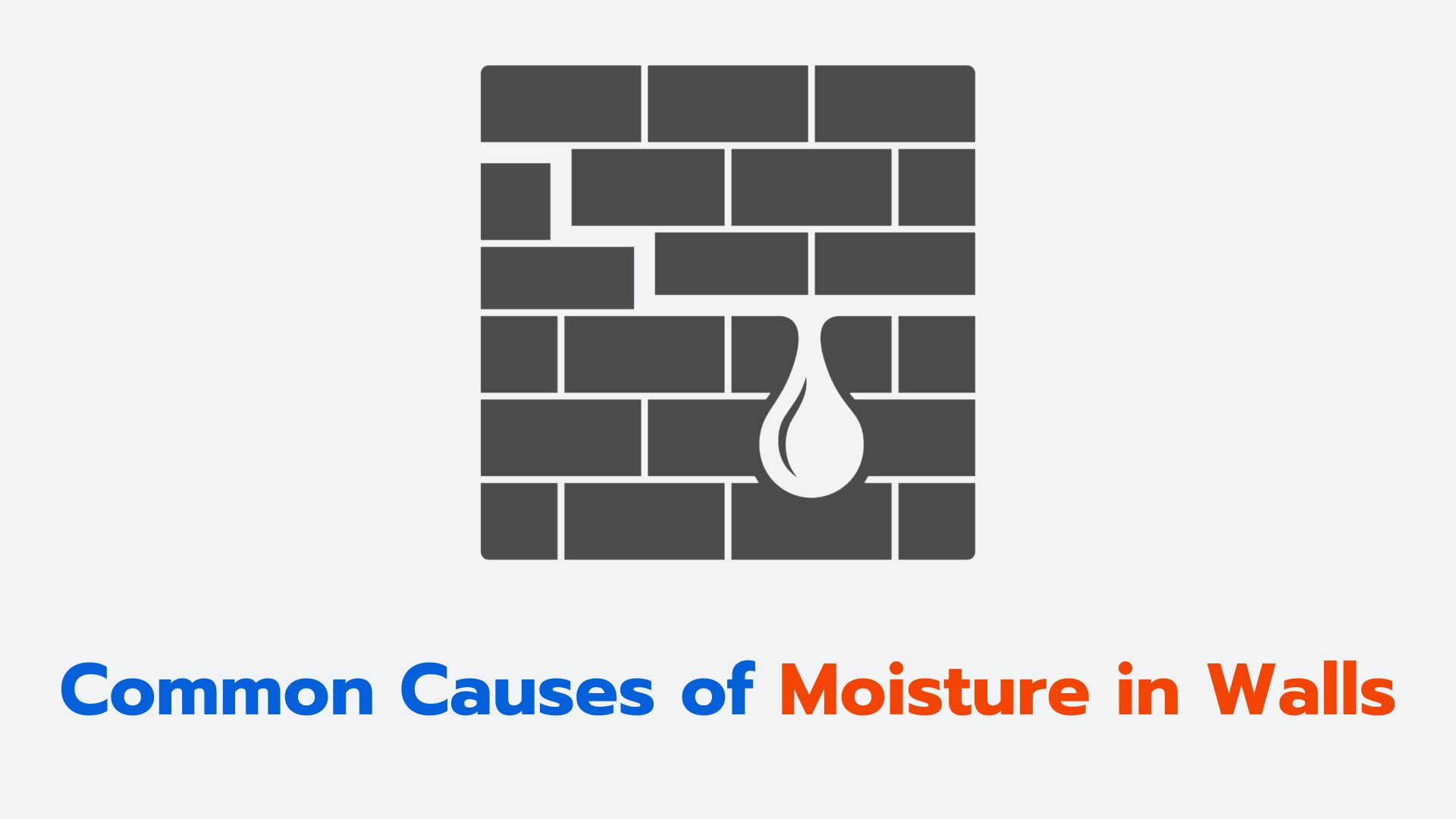
Many homes in Thailand encounter problems with excess moisture in walls. The topic is very often addressed in our Facebook group คนดีไซน์ and we will lay out the most common causes and remedies here in our guide for the benefit of group members.
Typical signs for excessive moisture in walls include:
- Tide marks (darker or discolored horizontal lines on walls)
- Peeling or bubbling paint and Wallpaper
- Efflorescence (white, powdery deposits on wall surfaces)
- Crumbling mortar and plaster
- Mold and stains
- Moldy/earthy odor
- Rotting wooden window and door frames
For a thorough understanding it is necessary to identify the specific type of damp in buildings before choosing the right repair method.

We can differentiate three basic types of humidity in walls:
- Rising Damp,
- Penetrating Damp,
- Condensation.
As each type can be caused by several issues, let us deep dive into each type.
If untreated, every form of damp walls will have a seriously negative impact on any house. Moisture will ultimately weaken the structure and lead to intensive rust in reinforcement steel. This is regardless of any visually unappealing effects. With mold growing, a house can become a serious health hazard.
1. Rising Damp
Rising damp is the general term used for moisture rising vertically through a wall due to soil water being soaked up by the structure. Concrete and bricks are porous materials, and so will act like a sponge when the lower part of it is getting wet. As there is a limit to the capillary action of a brick wall, rising damp will generally only be present to the lower 500 – 1000mm of a wall.
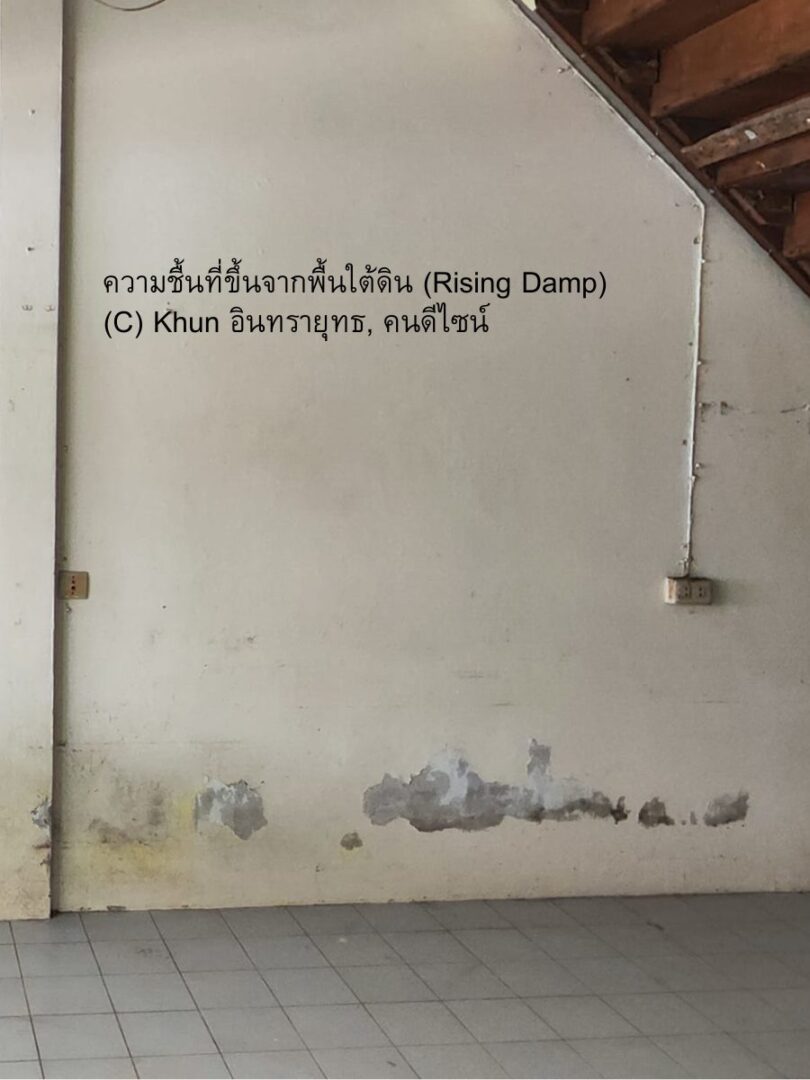
Due to the high ground water levels and frequent flooding incidents in Thailand, rising damp is significant cause for home owners. Building foundations are vulnerable to moisture problems for a number of reasons.
Simple physics behind the occurrence of rising moisture is the ascension of liquids through slim spaces, like tubes or a permeable substance due to adhesive and cohesive forces interacting between the liquid and the surface, called capillary action.
Rising damp happens when water travels up through the walls due to capillarity. Materials like bricks and concrete both are naturally porous and provide the minimal voids that water requires to rise.
Signs of rising damp are most apparent at the base of walls, up to about a meter high.
What are potential Causes for Rising Damp?
Foundations can be exposed to rain-soaked soil and high water tables in an area. Plumbing leaks can also permanently increase the moisture levels in the grounds which create the same effect. Water can also condense on foundation materials due to temperature differences between the material and the outside air. Especially crawl spaces under houses are bearing a high risk and can be both cause for rising damp and penetrating damp.
A special issue is high salt content in the ground in areas close to the sea. These salts will react chemically with the materials, which requires additional protective measures.
What are Options to prevent Rising Damp?
It is very simple to install a vapor barrier during construction of new buildings. While many people refer to it as “a plastic layer”, a quality vapor barrier is a specific physical membrane produced through multi-layer co-extrusion. Polyethylene is a commonly used material which needs to be resistant to punctures and deterioration to be effective for a long time. It will form a physical barrier that has moisture and air permeance (pass through) rating 0.01 perms or less.
Considering the multiple problems happening due to rising damp, the investment in a correct vapor barrier is an absolutely necessary investment.
In addition to such barrier, it is also essential to take all other measures the avoid excessive water around the foundation:
Plan the surrounding area as a slope to divert water away from the building. Reduce water infiltration into the soil surrounding the building by installing rain gutters and guiding water away from the foundation. In areas with high ground water levels, you need to consider installing buried drainage systems to divert water away from the foundation. Fill voids under the building with gravel as drainage material.
What are Remedies for cases of Rising Damp?
Significantly more complicated is the situation in cases where no vapor barrier was installed during construction, or where such barrier is failing, or the other draining measures were not executed.
In such cases, the first step should be to analyze the main cause of moisture in walls. Where external issues can be determined, immediate rectifying is relevant. Such can be the implementation of proper draining measures as a first step, adjusting external ground levels, or ensuring downspouts and gutters are free from blockage to prevent splashback and water accumulation around the base of walls.
The only way to treat rising damp caused by groundwater is to create a new damp-proofing layer in the wall to prevent moisture movement through the structure. Such measures are always an expert’s job.
Historically, walls were cut into, and masonry removed to install a new physical damp-proofing course along the masonry line. This process poses several problems for most structures, and it is lengthy, difficult, and expensive. A more recent method is the implementation of a Damp Proofing Course, which is the physical injection of a chemical into the wall which created a barrier. The process is expensive and time consuming.
We need to address a very common misconception here because you might hear the recommendation much too often that applying a waterproofing layer on the walls will solve the issue. This is absolutely not the case because rising moisture in walls will simply find another way. It can never be stopped by a layer of waterproofing material on top of the wall (coating). You can simply save the cost for such a measure.
2. Penetrating Damp
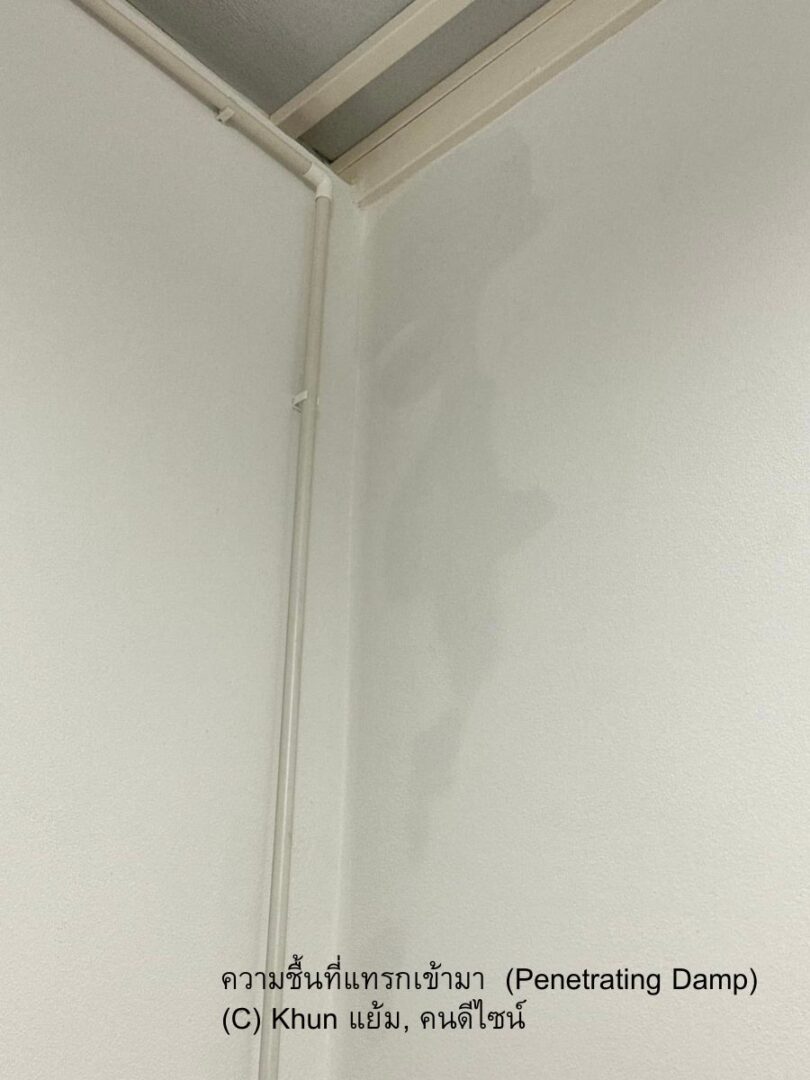
As the name suggests, penetrating damp is moisture passing horizontally through a wall.
This type of damp occurs when water infiltrates the building from outside, moving through the exterior wall or roof. Although it is especially common in aged or poorly maintained structures, serious architectural deficits can also cause penetrating moisture in brand new buildings.
A bit generalizing, but one could say that rain and leaks are the key factors for penetrating moisture. There can be a number of causes, but most cases they are obvious. Knowing where to look for will help in finding the right countermeasures. The correct way to prevent penetrating damp lies to a much bigger extent in the details.
What are Causes of Penetrating Damp?
The list of causes is long, but the two most relevant factors are: rain and leaking pipes.
Very common issues include damaged roofing, faulty gutters, improper detailing and sealing around windows or doors, unprotected ledges, incorrect waterproofing of decks and balconies, and compromised exterior wall coverings.
What are Options to prevent Penetrating Damp?
Generally, the initial step to avoid penetrating moisture is proper architectural planning. Competent architects and engineers will detect potential entry points of rainwater during the design phase of a home and are going to advise their customers accordingly. Ask them if they executed a “pen test” and you can determine from their answer if they have sufficiently considered necessary precautions. Even as a home owner without special skills you can imagine potential ways that rainwater would take on the home exterior by looking at drawings and renderings.
Another essential point is to select optimal roof shapes, as well as windows and doors that are waterproof. Neglecting such selection because of const concerns will easily turn against you by cause high rectification and repair cost. Take care that during construction all necessary layers of waterproofing are installed in relevant areas (bathroom, balcony, decks).
Simply said, penetrating damp can be prevented with correct water management. The goal is to get as much water away from the building enclosure as possible.
Key elements are here:
- Having a sufficient roof overhang.
- Install drip edges under every overhand.
- Roofing materials need sufficient overlap.
- Plan draining and weeping correctly.
What are Remedies for Cases of Penetrating Damp?
Immediate actions should be to address the causes by repairing or replacing damaged components and ensuring proper sealants are applied around openings. Sometimes, simply improving the detailing where external walls meet the elements can prevent water ingress.
We can only discuss a few points to demonstrate the respective repair options. The correct measures will only depend on your specific case.
Repair pipe leaks immediately. Apply proper waterproofing in bathrooms, kitchens, balconies, terraces, decks, outdoor ledges. Use roof constructions with sufficient overhang. Protect the roof edges and connections with correct flashings. Make sure all sides of a roof have sufficient drip edges. Install rain gutters that can carry more than the maximum rain load in your area. Replace windows and doors that have insufficient draining options. Replace broken bricks in walls or cracks in plaster. Penetrating damp is the only reason why you might also consider applying a waterproofing layer on external walls. Remove moss and plants from walls because they weaken the surface. Obviously, repair broken tiles in roofs.
Let only competent contractors, which you find on Kitzee, install windows and doors because that is an essential part of ensuring peace of mind.
Before starting to renovate damaged walls, you need to make sure that the actual cause is cured. Give damp walls sufficient time to dry completely before renovating the surface by repairing the plaster and repainting. Brick and concrete walls dry at a very slow rate of about 25 mm per month. You can count how many month it will take to be sure that normal exterior walls of 150-200mm thickness to dry completely if unsupported by mechanical measures like heaters.
3. Condensation
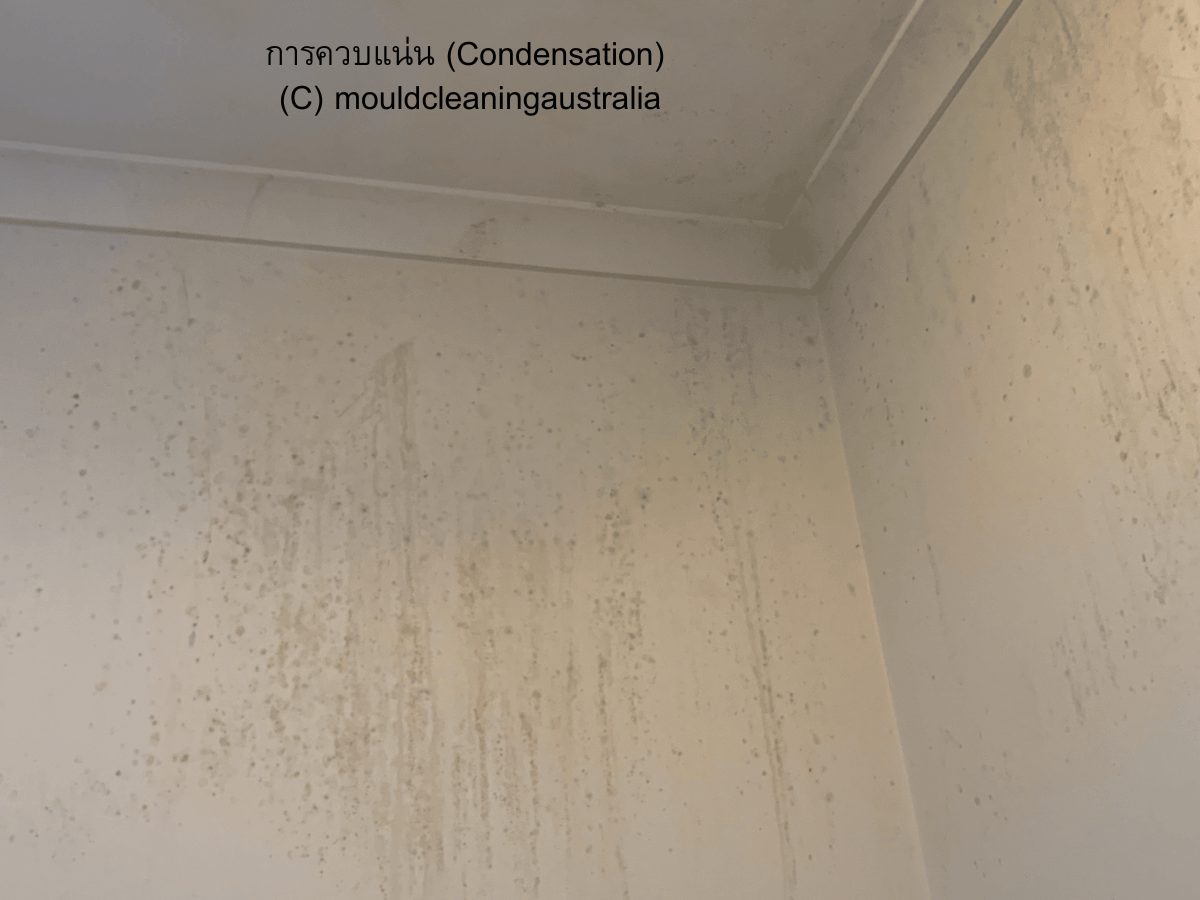
Condensation occurs when warm, moist air comes in contact with cooler surfaces. This is causing the moisture in the air to condense. With significantly lower temperatures in airconditioned areas, condensation can easily happen on windows and walls. Even hollow areas under a house or an attic can be the cause for condensation when the temperature difference is high. Luckily, condensation problems are easy to handle. It is only important to act early enough and not to wait for problems to appear. The unmistakable sign that home owners were taking too long to take action against condensation is the appearance of mold on inside walls. An early warning can be stuffy smell in rooms.
A very interesting aspect to consider about condensation is why it was never an issue with the wooden house structures of the elders. This is simply due to the fact that natural ventilation was significantly better in old times and wood has the natural ability to absorb and release excess humidity. These abilities are significantly less with modern construction materials.
What are Causes of Condensation?
Daily activities like cooking, bathing, and drying clothes indoors can significantly increase the anyway high indoor humidity levels in Thailand. Precipitation happens when the excess humidity is accumulating on colder surfaces, particularly in homes with air conditioning.
Insufficient ventilation exacerbates the issue.
What are Remedies for Cases of Condensation?
Luckily, potential solutions are often easy to implement and don’t cost much.
Improving ventilation is always a key. Open windows and doors frequently. It is not necessary to leave them open for extended periods of time, the relevant factor is to create sufficient air movement (ventilation) in your home.
The use of extraction fans (hoods) in kitchens and enclosed bathrooms is another essential precaution.
Ensuring sufficient trickle vents in windows can help manage the moisture levels too.
Try to leave a gap of at least 100mm between furniture and the wall surface in order to allow circulation.
Simply prevent stagnant, moist air pockets that lead to mold and mildew.
While all these measures are easy to implement in permanently inhabited homes, people living away from their homes for longer periods of time find it difficult to take the necessary steps. If there are no family members or trustworthy neighbors in the area to open the home for frequent ventilation, using timers to let air conditioners run in dehumidifying mode on a daily basis can be very useful. The method will cost money for the necessary electricity. You need to make sure that the aircons are not leaking easily, which could cause even more damage to your home.
Let us add an often neglected warning to home owners which is not to use external wall paints on the inside. Those paints form a barrier that prevents natural breathing of walls which increases the chance of condensation disproportionately on indoor walls.
What are our key takeaways?
Understanding the signs and causes of damp in walls is essential to take the right measures.
Regular inspection and immediate counteraction prevent further damage to the home structure.
There are a lot of practical steps to combat damp that you can take as home owner.
- Ventilation: Ensure good airflow by opening windows, using fans, and maintaining overall ventilation.
- Drainage: Install sufficient drainage around your home to transport excess waters away.
- Temperature Control: Maintain a moderate indoor temperature level to prevent condensation on walls.
- Fix Leaks: Promptly repair any leaks, whether from roofs, pipes, or faucets.
- Gutter Maintenance: Ensure gutters and downspouts direct water away from walls effectively.
- Seal Cracks: Fortify the house by sealing cracks to prevent moisture infiltration.
- Proper roofing: Install all relevant options to guide away rainwater from the exterior.
- Dehumidifiers: Use dehumidifiers in damp-prone areas to remove excess moisture.
Seek professional help whenever you encounter signs of damp walls and can’t determine the correct remedies yourself. Use the help of other members in our Facebook group คนดีไซน์.
Distinguishing between the three main types of damp is essential, as each has different implications and solutions.
It’s a misconception that all damp problems require costly interventions like chemical DPCs. Many situations can be resolved with simpler, less invasive measures.
Moreover, it’s advisable to seek multiple professional opinions before committing to expensive remedies, as misdiagnosis can lead to unnecessary and ineffective treatments.
Use our Kitzee platform to look for experts in your area. Depending on your initial problem analysis, you might need specialists for roofing, plumbing, or ventilation. Many home inspection companies can assist you in finding causes for damp in walls and suggest correct countermeasures.
Ultimately, understanding and addressing the specific causes of damp in your home can save you time and money for costly renovations while ensuring the health and longevity of your living space.
We hope you find our Kitzee guide useful.
Successful projects start with Kitzee:
Customers get their home projects done right the first time with our trustworthy contractor reviews.
Companies grow their business with a strong reputation build by satisfied customers and excellent references.
Sign up today to enjoy the benefits of Kitzee.
